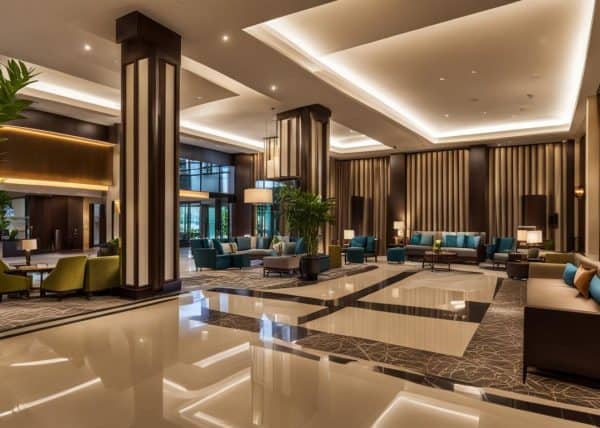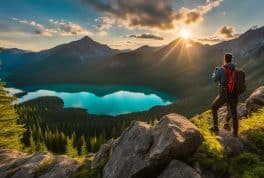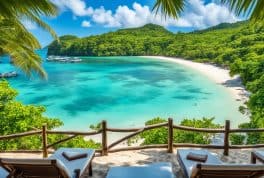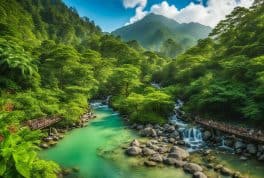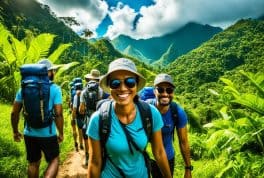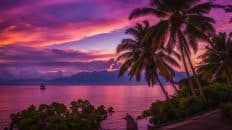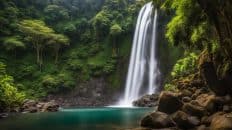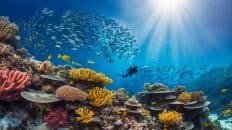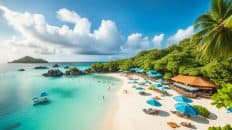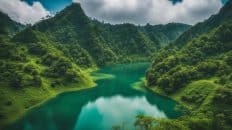Negros Island
Negros Island, known as the 'Sugarbowl of the Philippines', is a vibrant mix of natural beauty and rich cultural heritage. Divided into Negros Occidental and Oriental, it features lush sugarcane fields, the active Mount Kanlaon, and pristine beaches. Celebrated for its lively MassKara Festival and a blend of Spanish and Filipino influences, Negros offers a unique glimpse into the diverse tapestry of Filipino life.
Top 10 Things to see in Negros
- Mount Kanlaon: The highest peak on the island, an active volcano known for its majestic beauty and challenging hiking trails.
- The Ruins in Talisay: Often referred to as the "Taj Mahal of Negros", this historical mansion's ruins offer a glimpse into the island's rich past and stunning architecture.
- Sipalay Beaches: Known for their pristine beauty, the beaches of Sipalay are perfect for relaxation, swimming, and enjoying picturesque sunsets.
- Apo Island Marine Reserve: A haven for divers and snorkelers, this protected area is famous for its vibrant coral reefs and diverse marine life.
- Mambukal Mountain Resort: A mountain resort offering hot sulfur springs, waterfalls, and trekking opportunities, ideal for nature lovers.
- Lakawon Island: A beautiful white sand beach and a popular destination for its clear waters and the famous TawHai floating bar.
- Silay City Heritage Houses: Silay City is known for its well-preserved collection of ancestral homes and historical buildings, reflecting the island’s colonial history.
- Pulang Tubig Waterfalls: Located in Negros Oriental, these waterfalls offer a serene and refreshing retreat surrounded by lush greenery.
- Rizal Boulevard in Dumaguete: A popular seaside promenade lined with restaurants and cafes, perfect for leisurely walks and dining with a view.
- Negros Museum in Bacolod: An essential visit for those interested in the cultural and historical aspects of Negros, showcasing artifacts and exhibits related to the island’s history, art, and culture.
Guides and Tours
Cities on Negros
- Bacolod
- Bago
- Bayawan
- Bais
- Cadiz
- Canlaon
- Dumaguete
- Escalante
- Guihulngan
- Himamaylan
- Kabankalan
- La Carlota
- Sagay
- San Carlos
- Silay
- Sipalay
- Talisay
- Tanjay
- Victorias
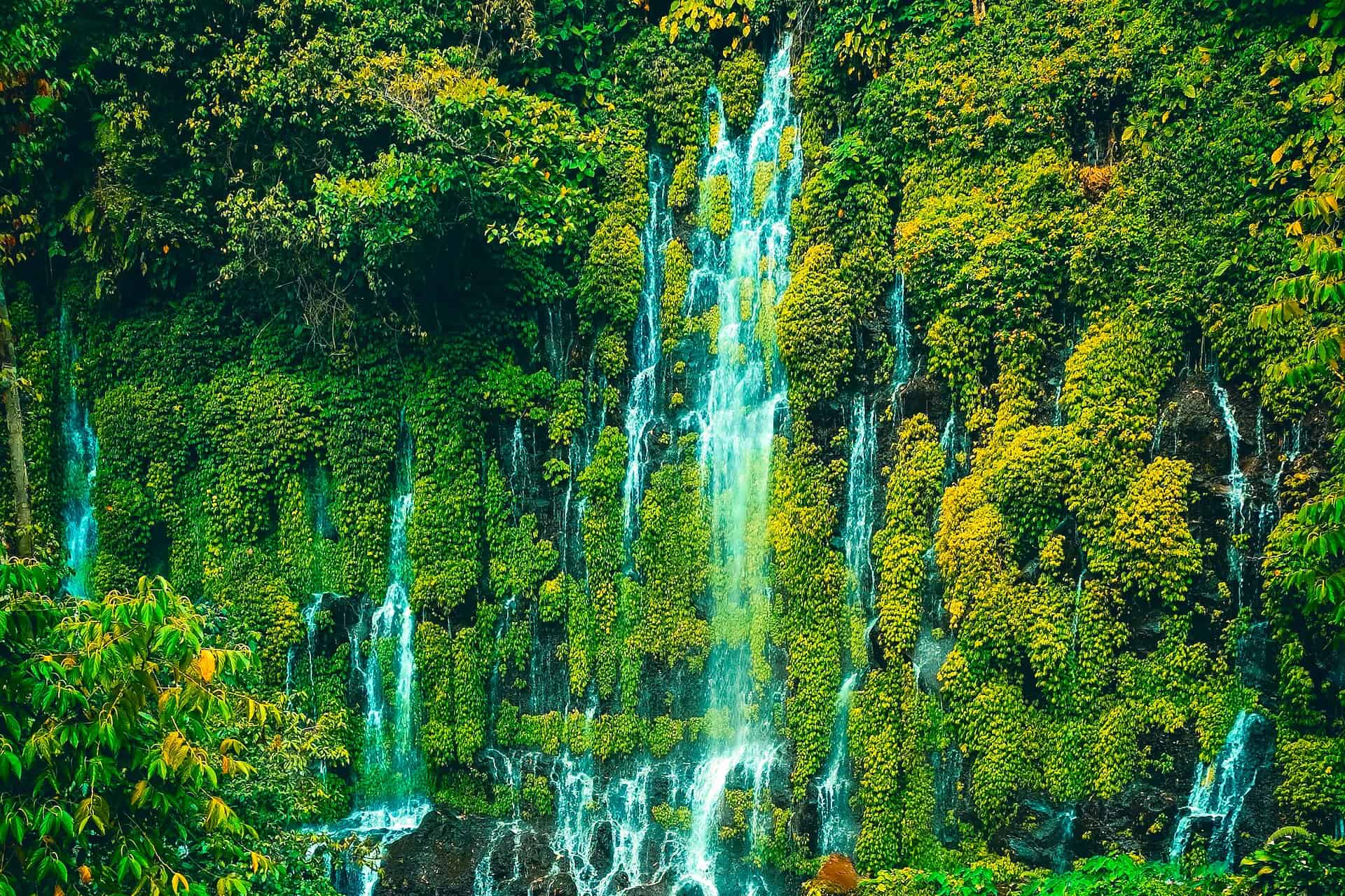
Top 10 Questions and Answers about Negros
- What is Negros Island known for?
- Answer: Negros Island, divided into Negros Occidental and Negros Oriental, is renowned for its vast sugarcane plantations, earning it the nickname 'Sugarbowl of the Philippines.' It's also known for its rich cultural heritage, beautiful natural landscapes, and vibrant festivals like the MassKara Festival in Bacolod City.
- What are the major cities in Negros?
- Answer: The major cities in Negros include Bacolod City in Negros Occidental, famous for its culinary scene, and Dumaguete City in Negros Oriental, known as a center of learning and culture.
- Can you tell me about the MassKara Festival?
- Answer: The MassKara Festival is a colorful and joyous festival held in Bacolod City every October. It features street dances, elaborate masks, and costumes, representing the resilience and cheerful spirit of the people of Bacolod and Negros Occidental.
- What are some natural attractions in Negros?
- Answer: Negros boasts several natural attractions, including Mount Kanlaon, an active volcano and popular hiking destination, the pristine beaches of Sipalay, and the Apo Island Marine Reserve, known for its diverse marine life and coral reefs.
- Is Negros Island a good destination for food lovers?
- Answer: Absolutely! Negros offers a rich culinary experience, with specialties like Chicken Inasal, a grilled chicken dish, and sweet delicacies made from locally grown sugarcane. Bacolod City, in particular, is a food lover's paradise.
- What is the best time to visit Negros Island?
- Answer: The best time to visit Negros is during the dry season from December to May. This period avoids the heavy rains and typhoons, and it’s also when most festivals, including the MassKara Festival, take place.
- How do I get to Negros Island?
- Answer: Negros Island is accessible by air and sea. The Bacolod-Silay Airport in Negros Occidental and the Dumaguete Airport in Negros Oriental have flights connecting to major cities in the Philippines. There are also ferry services from neighboring islands.
- What are some cultural activities to experience in Negros?
- Answer: Visitors can explore the island’s rich history through its heritage buildings, participate in local festivals, visit museums, and engage in traditional crafts like weaving and pottery.
- Is Negros Island suitable for eco-tourism?
- Answer: Yes, Negros is an excellent destination for eco-tourism. It offers numerous eco-friendly activities such as nature trekking, bird watching, and diving, along with eco-tourism sites like Danjugan Island and the Mambukal Mountain Resort.
- What languages are spoken in Negros?
- Answer: The primary languages spoken in Negros are Hiligaynon or Ilonggo in Negros Occidental and Cebuano in Negros Oriental. English and Filipino are also widely spoken and understood, especially in urban areas and tourist spots.
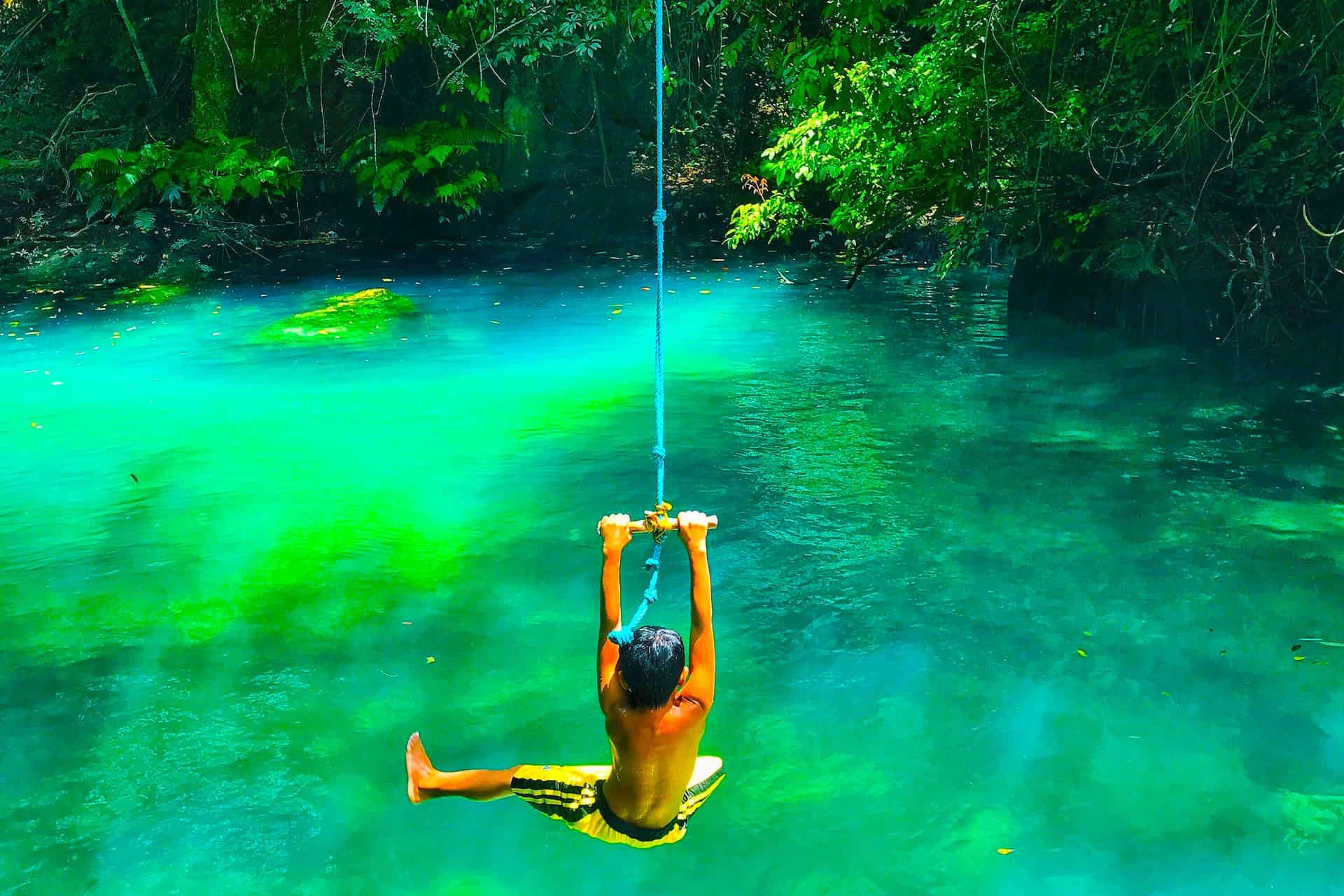
Why you should Visit Negros
Discovering Negros: A Hidden Gem in the Philippines
Introduction: The Allure of Negros
Nestled in the heart of the Philippines, Negros emerges as a destination that captivates the heart of every traveler. Known for its rich cultural heritage, stunning natural landscapes, and warm hospitality, Negros offers a unique blend of experiences that cater to all kinds of visitors. Whether you're a history enthusiast, nature lover, or simply in search of a serene getaway, Negros promises an unforgettable journey.
The Cultural Melting Pot of Negros
Negros is a treasure trove of cultural experiences. The island, divided into Negros Occidental and Negros Oriental, presents a fascinating blend of indigenous traditions and Spanish influences. One can't miss the vibrant festivals such as Bacolod's MassKara Festival, a spectacle of color, dance, and music that embodies the spirit of the Negrenses. The heritage buildings and ancestral homes, particularly in Silay City, offer a glimpse into the island's rich history.
A Nature Lover's Paradise
For nature enthusiasts, Negros is nothing short of paradise. The island's diverse landscapes range from the pristine beaches of Sipalay to the lush rainforests of the North Negros Natural Park. The active volcano Mount Kanlaon, towering over the island, beckons trekkers and adventure seekers. Negros' marine life is equally impressive, with Apo Island being a world-renowned diving spot known for its vibrant coral reefs and diverse marine species.
Culinary Delights of Negros
Negros is also a haven for food lovers. The island's cuisine is a delightful fusion of flavors influenced by its cultural heritage. Local dishes such as Chicken Inasal and Kansi are a must-try, along with the sweet treats made from the island’s famous sugarcane. Bacolod, the capital city of Negros Occidental, offers a culinary adventure that promises to satisfy every palate.
Engaging in Local Life and Traditions
Visiting Negros is an opportunity to immerse oneself in the local way of life. The island's towns and cities are bustling with activities, markets, and local festivities where visitors can engage with the community. Handicrafts like weaving and pottery, practiced in various parts of the island's coastal areas, offer insight into the local craftsmanship and traditions.
Sustainable Tourism: A Responsible Approach
Negros is at the forefront of sustainable tourism in the Philippines. The island's approach to tourism focuses on preserving its natural and cultural heritage while benefiting the local communities. Eco-tourism initiatives in areas like Danjugan Island and the Mambukal Mountain Resort showcase the island’s commitment to environmental conservation.
Conclusion: An Unmissable Destination
In conclusion, Negros is a destination that offers a rich tapestry of experiences. Its blend of natural beauty, cultural richness, culinary delights, and sustainable tourism practices makes it an unmissable destination for travelers seeking a comprehensive and authentic Philippine experience. Whether it’s exploring the historical landmarks, reveling in the natural wonders, savoring the local cuisine, or engaging with the vibrant community, Negros promises memories that will last a lifetime.
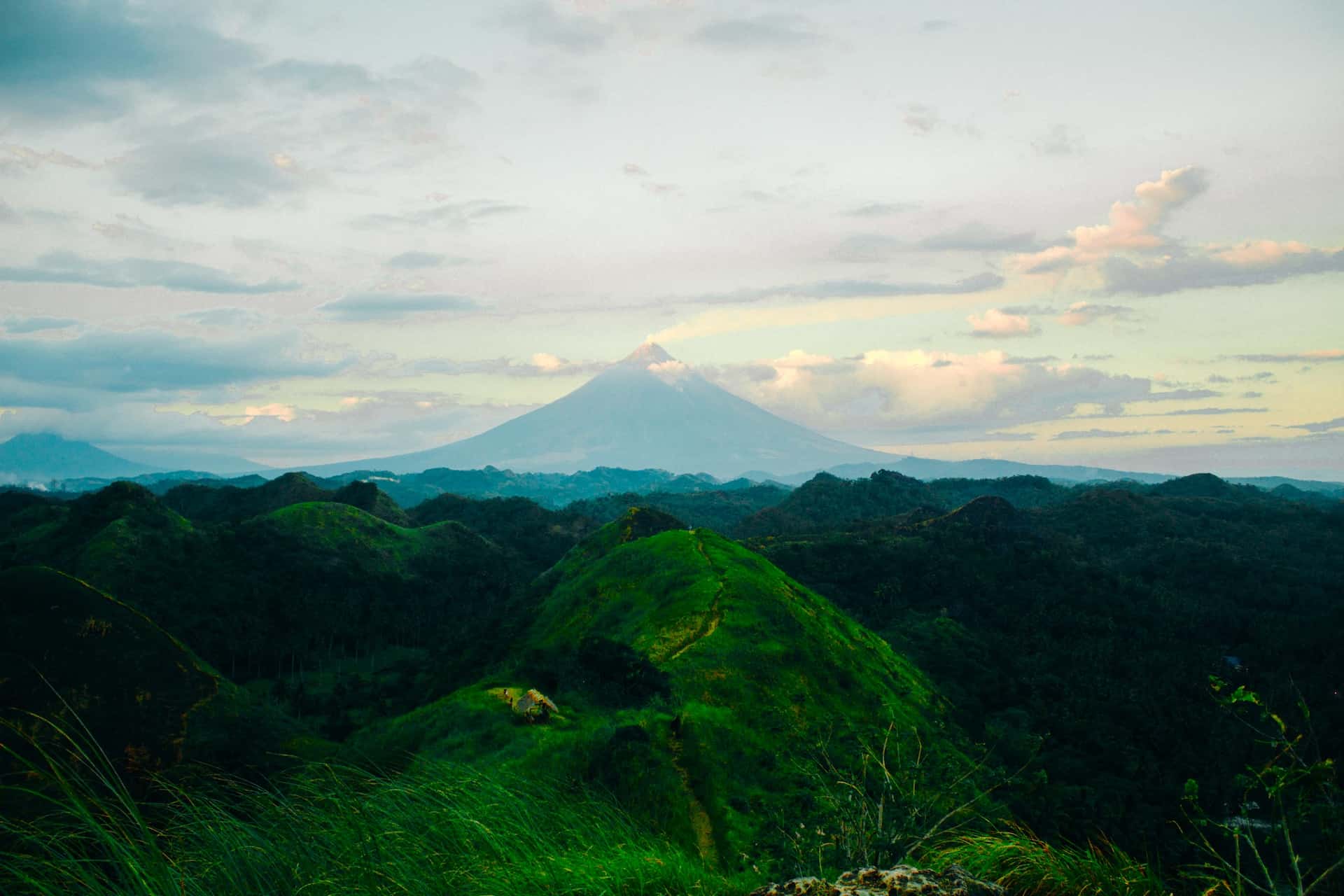
Negros Island Facts
1: Geographical Overview of Negros
Negros, an island synonymous with unparalleled natural beauty and a rich cultural tapestry, stands proudly as one of the largest islands in the Philippines. This enchanting landmass, divided into the twin provinces of Negros Occidental and Negros Oriental, presents a geographical and cultural dichotomy that has fascinated travelers and historians alike. The island of Negros, with its lush central mountain range, verdant eastern coast, and vibrant western coastal areas, offers a vivid snapshot of the Philippines' diverse landscapes and heritage.
The very mention of Negros conjures images of an island paradise. Nestled in the central part of the Philippines, Negros is flanked by the Visayan Sea to the north and northwest and the Sulu Sea to the east and south. It is part of the Visayas island group, lying near Panay Island to its northwest and Cebu to the north and east. The island's unique position has endowed it with a rich variety of natural landscapes, from its coastal areas to its rugged interior.
Negros' central mountain range, a spine that runs along the length of the island and west side, separates the two provinces. This mountain range is not only a geographical divider but also a rich repository of biodiversity. The forested upland interior, often shrouded in mist, is home to an array of endemic flora and fauna, making Negros a haven for nature enthusiasts and researchers. The central mountains, deeply dissected and separated by numerous river systems, are a testament to the island's dynamic geological history.
On the more eastern coast and side, Negros Oriental unfolds with a landscape marked by gentle slopes and an array of smaller mountains that gradually meet the sea. The eastern coast of Negros Oriental is a picture of tranquility, with its serene beaches and densely populated, small fishing communities. Here, the coastal areas are dotted with rice paddies and sugarcane plantations, painting a pastoral scene that has remained largely unchanged for generations.
In contrast, Negros Occidental, on the western side and north of the island, presents a different vista. The western island's coastal areas are more developed, more densely populated with larger towns and cities bustling with activity. The province of Negros Occidental is known for its sugarcane fields, which have played a significant role in the island's economy and history. Bacolod City, the capital of Negros Occidental, is often referred to as the 'Sugarbowl of the Philippines', underscoring the province first capital's deep connection with sugar production.
The two provinces of Negros, though part of one island, have evolved distinct identities over the centuries. Negros Oriental, with its capital city of Dumaguete, has developed a reputation as a center of education and learning, hosting several universities and colleges. Meanwhile, Negros Occidental, with Bacolod City as its pulsating heart, is renowned for its vibrant festivals, most notably the MassKara Festival, which showcases the province's rich cultural heritage and joyful spirit.
The island's coastal areas, both in Negros Oriental and Negros Occidental, are not just about picturesque beaches and scenic sunsets. These areas play a crucial role in the lives of the local communities. Fishing is a vital livelihood for many living along the coast, and the bounty of the sea is a significant contributor to the local diet and economy.
"Negros island]' history is as captivating as its landscapes. The island was once under Spanish colonial rule, which has left an indelible mark on its culture and architecture. The remnants of this era can be seen in the old churches, ancestral homes, and public buildings that dot the island. The earliest native settlements on Negros island, believed to be established by dark-skinned natives known as the Ati or Negritos, speak of a rich and diverse pre-colonial history. These earliest inhabitants of Negros island had a unique culture and way of life, which has been integrated into the broader Filipino cultural tapestry.
The island's name, 'Negros', itself is a vestige of its past. It is believed to have been named by the Spanish colonizers who arrived in the country in 16th century, impressed by the dark-skinned natives they encountered. This historical encounter marked the beginning of centuries of Spanish colonization, which shaped the cultural, social, and political landscape panay island of Negros.
The Spanish colonial rule also brought about significant changes in land ownership and agriculture. Large tracts of land were converted into haciendas, primarily for the cultivation of sugar. This led to the establishment of a wealthy landowning class and a large population of workers who toiled in the sugarcane fields. The sugar industry, which took root during this period, would go on to define Negros' economy for centuries to come.
Post-colonial Negros saw the establishment of a civil government, transitioning from Spanish rule to being an integral part of the independent Republic of the Philippines. This change brought about a new era of development and progress, with infrastructure improvements and the establishment of institutions of governance and education.
Today, Negros continues to thrive as a region of immense importance to the Philippines. Its economy, while still heavily reliant on sugar, has diversified to include other agricultural products, tourism, and a growing services sector. Cities like Bacolod and Dumaguete are bustling centers of commerce and culture visited negros, drawing visitors from across the country and beyond.
Negros' highest point, Mount Kanlaon, stands as a symbol of the island's majestic natural beauty. This active volcano, located near the border of the two provinces, is a popular destination for trekkers and nature lovers. Its slopes are covered in dense forests and are home to a diverse range of wildlife. The mountain, with its mystical allure, has been an integral part of local folklore and is revered by the people of Negros.
As one traverses the island, from the sugar-rich western Negros to the serene eastern coast, the contrast in landscapes and lifestyles becomes evident. Yet, amidst these differences, there is a unifying thread - the resilient and warm spirit of the people of Negros. This spirit is reflected in their festivals, their art, and their daily lives.
Negros, with its rich history, diverse culture, and stunning natural landscapes, stands as a testament to the Philippines' multifaceted identity. The island's journey, from its earliest native settlements to its current status as a key player in the nation's economy, is a story of resilience, adaptation, and enduring charm. As travelers visit Negros, whether to explore its mountain ranges, relax on its beaches, or delve into its cultural heritage, they are welcomed by an island that has much to offer and even more to discover.
In conclusion, the geographical overview of Negros provides a glimpse into an island that is as diverse as it is beautiful. From the central mountain range to the western coastal areas, from the sugarcane fields of Negros Occidental to the educational institutions of Negros Oriental, the island presents a tapestry of landscapes, cultures, and stories waiting to be explored. Negros is not just an island; it is a microcosm of the Philippines' rich heritage, a land where history and modernity coalesce to create a unique and unforgettable experience.
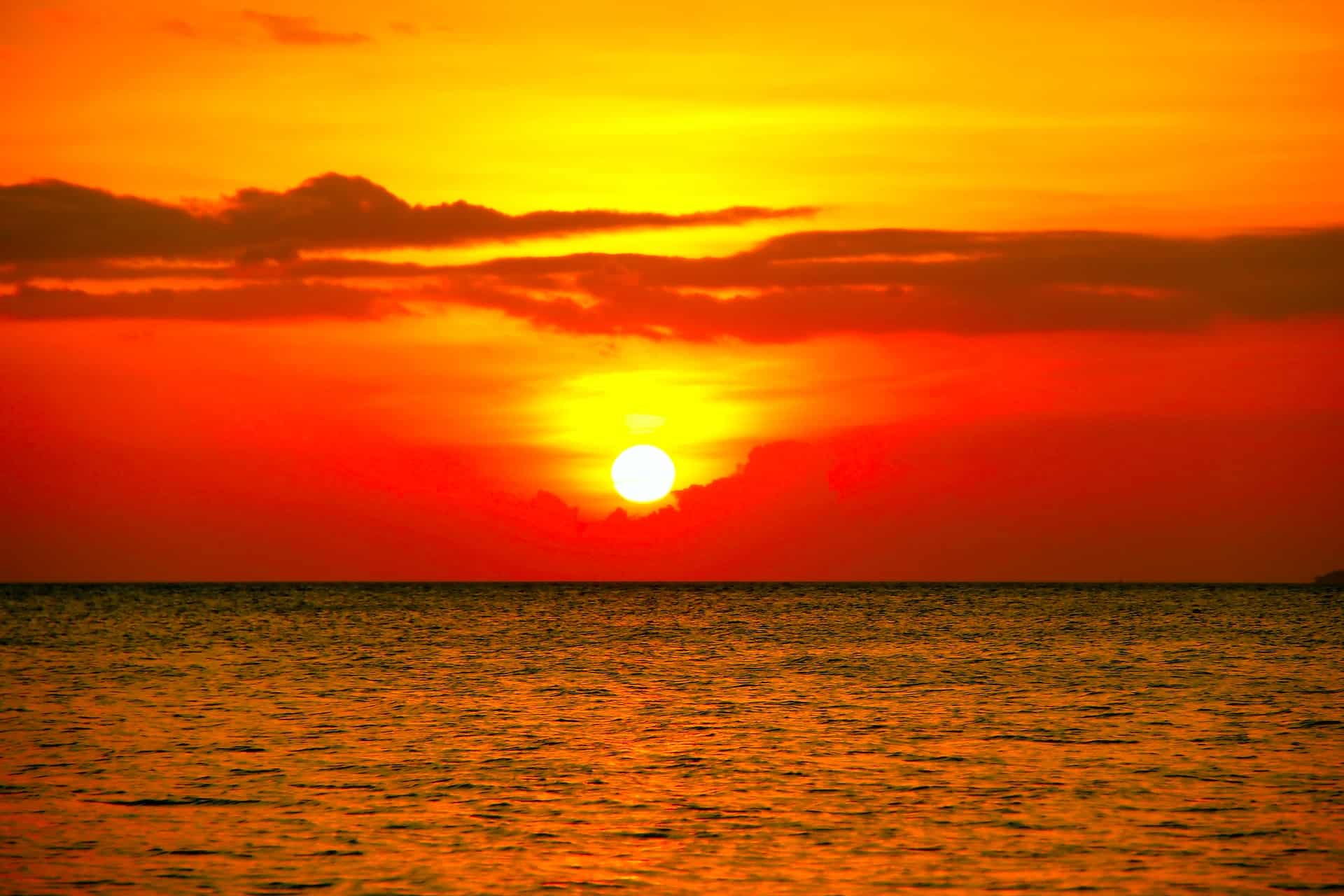
2: Historical Context of Negros
Negros, an island rich in history and culture, offers a fascinating glimpse into the Philippines' colonial past and its journey to modernity. The island's history is a tapestry of native settlements, colonial rule, and the eventual rise of a distinct cultural identity. From the earliest inhabitants to the impact of Spanish colonization, Negros' past is as diverse as its landscapes.
The Pre-Colonial Era and Early Settlements
Long before the Spanish set foot on the island, Negros island was home to various indigenous groups. The earliest native settlements, believed to have been established by dark-skinned natives known as Negritos or Atis, were scattered across the island's western coastal areas only. These early inhabitants of Negros island led a semi-nomadic lifestyle, relying on hunting, fishing, and basic agriculture. The Negritos, who were the island's earliest inhabitants, played a crucial role in shaping its early cultural landscape.
Negros, during this pre-colonial period, was not a unified political entity but a collection of independent communities, each with its unique customs and governance structures. The island was known for its rich natural resources, which attracted traders and settlers from neighboring islands and regions. This period was marked by relative peace and prosperity, with the various communities coexisting harmoniously.
Spanish Colonial Rule and Its Impact
The arrival of the Spanish in the 16th century marked a turning point in the history of Negros. Spanish colonization brought with it significant changes in the island's social, political, and economic structures. The Spaniards, struck by the appearance of the dark-skinned natives, named the island "Negros."
Under Spanish colonial rule, Negros underwent a transformation. The Spanish introduced Christianity, which led to the establishment of several churches and religious institutions across the island. The most notable impact of Spanish rule, however, was in the realm of land ownership and agriculture.
Large tracts of land in Negros were converted into haciendas, or large estates, primarily for the cultivation of sugar. This shift led to the emergence of a wealthy landowning class, which would dominate the island's economy and politics for centuries. The sugar industry, introduced during Spanish rule, became the cornerstone of Negros' economy, earning it the nickname "Sugarbowl of the Philippines."
The establishment of these haciendas also led to significant demographic changes. A large workforce was needed to cultivate the sugarcane fields, leading to an influx of laborers from other parts of the Philippines. This migration contributed to the diverse cultural makeup of Negros, blending various Philippine ethnic groups into a unique cultural identity.
Spanish rule in Negros was not without its challenges. The colonial government faced resistance from local leaders and communities, leading to occasional conflicts. Despite these challenges, Spanish rule left an indelible mark on the island's culture, language, and architecture, remnants of which are still evident today.
The Transition to the Modern Era
The end of Spanish colonial rule in the late 19th century ushered in a new era for Negros. The island became a part of the newly established Philippine Republic, transitioning from a colonial outpost to an integral part of a sovereign nation.
The establishment of a civil government brought about significant changes in Negros. The island's political and administrative structures were reorganized, with the establishment of provinces, cities, and municipalities. Negros was divided into two provinces: Negros Occidental and Negros Oriental, each with its own provincial government and capital.
This period also saw the rise of new economic activities and industries. While sugar remained the dominant crop, other agricultural products such as rice, corn, and coconut began to be cultivated. The island's economy started to diversify, reducing its dependence on sugar.
Negros' cities, especially Bacolod in Negros Occidental and Dumaguete in Negros Oriental, began to grow and modernize. These cities became centers of commerce, education, and culture, attracting people from across the island and beyond. The urbanization of Negros played a crucial role in shaping its contemporary identity.
The 20th century brought further changes to Negros. The island played a significant role in the Philippines' struggle for independence and during World War II. Negros' strategic location made it a focal point of military activities, leaving a lasting impact on its people and infrastructure.
Post-war Negros saw a period of reconstruction and development. The island's infrastructure was rebuilt, and efforts were made to revive the economy. The sugar industry, which had suffered during the war, was revitalized, reaffirming Negros' status as a major sugar producer.
Cultural Evolution and the Modern Identity of Negros
The latter half of the 20th century and the early 21st century have been a time of cultural renaissance for Negros. The island has embraced its diverse heritage, celebrating its unique blend of indigenous, Spanish, and modern Filipino influences.
Festivals, such as the MassKara Festival in Bacolod and the Sandurot Festival in Dumaguete, showcase the island's rich cultural tapestry. These festivals, with their colorful parades, music, and dance, celebrate the history, traditions, and resilience of the people of Negros.
The arts and crafts of Negros have also gained recognition. Local artisans produce a variety of handicrafts, including textiles, pottery, and woodwork, which reflect the island's artistic heritage. Negros' cuisine, a fusion of indigenous, Spanish, and Asian influences, has become a source of pride and a draw for tourists.
Negros' educational institutions have played a significant role in shaping its modern identity. Universities and colleges in Bacolod and Dumaguete are known for their academic excellence, attracting students from across the Philippines. These institutions have become centers of learning and innovation, contributing to the intellectual and cultural development of Negros.
The contemporary identity of Negros is that of an island that has successfully blended its past with the present. Its history of native settlements, Spanish colonial rule, and transition to modernity has created a unique cultural landscape. Today, Negros stands as a testament to the resilience and adaptability of its people, an island that has navigated the currents of history to carve out its own distinct place in the Philippines and the world.
In conclusion, the historical context of Negros is a narrative of transformation and resilience. From its earliest inhabitants to its contemporary society, the island has witnessed and adapted to monumental changes. Its history of Spanish colonial rule, the rise of the sugar industry, and the evolution of its cultural identity have shaped Negros into what it is today: a vibrant and diverse island with a rich heritage and a promising future. As one explores Negros, the layers of its history unfold, revealing an island that is as complex as it is captivating, a land that continues to charm and inspire.
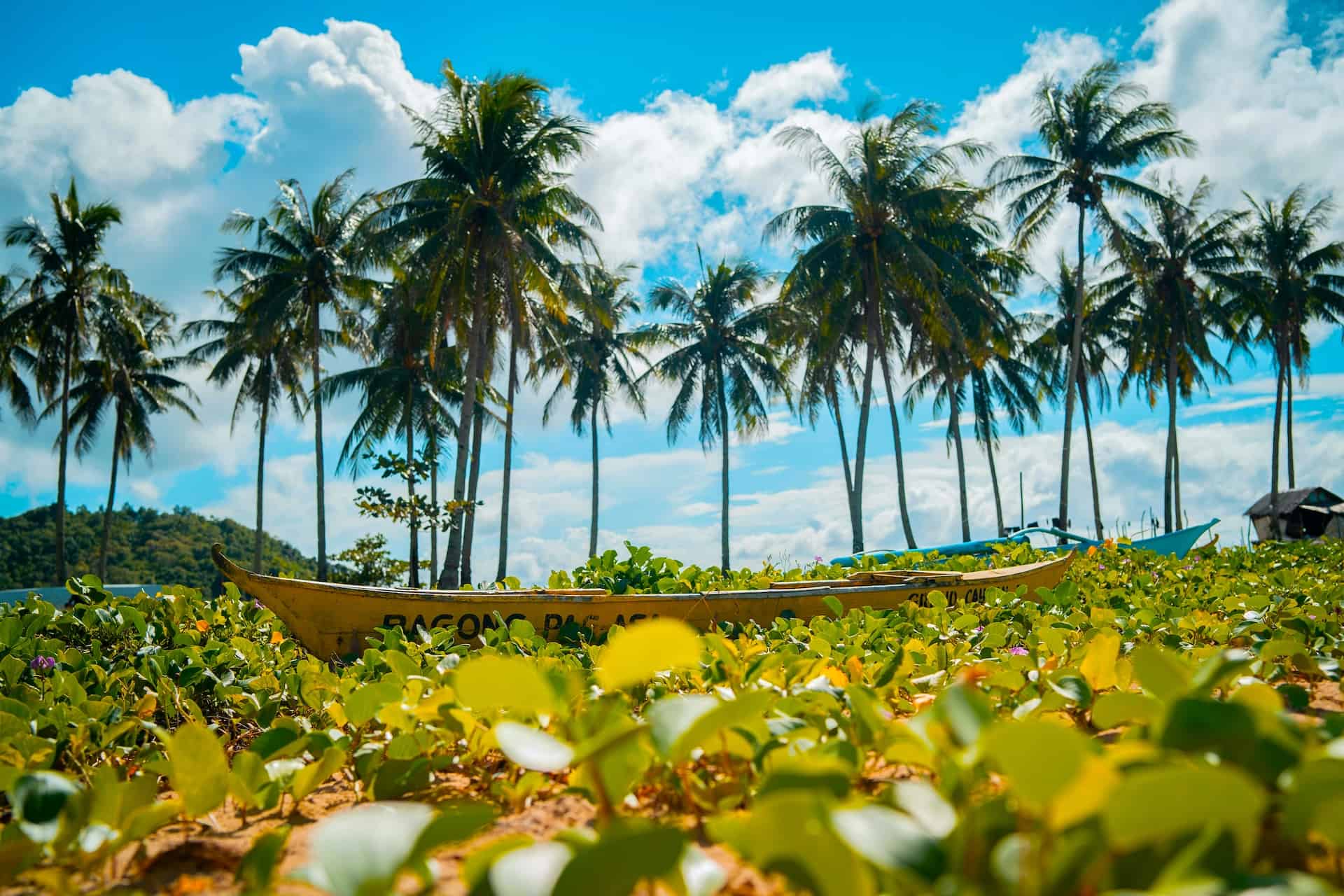
3: Cultural and Social Fabric of Negros
Negros, an island rich in cultural heritage and social diversity, stands as a beacon of the Philippines' multifaceted identity. This section delves into the intricate cultural and social fabric of Negros, exploring the demographics, languages, traditions, and the vibrant lifestyle that define this enchanting island.
The People of Negros: A Melting Pot of Cultures
Negros, with its two provinces of Negros Occidental and Negros Oriental, is home to a diverse population that reflects the island's complex history and geographical diversity. The Negritos, the island's earliest inhabitants, have left an indelible mark on its cultural landscape. Over the centuries, the island has seen waves of migration, including settlers from other parts of the Philippines and Spanish colonizers, creating a melting pot of cultures.
The population of Negros is predominantly Visayan, with the majority speaking the local dialects of Hiligaynon in Negros Occidental and Cebuano in Negros Oriental. These languages, widely spoken across the island, are a testament to the cultural integration and exchange that have occurred over the centuries. English and Filipino, the official languages of the Philippines, are also commonly used, widely spoken especially in educational institutions and urban areas.
Negros' culture is a vibrant tapestry woven from various cultural threads. The island's festivals, such as the renowned MassKara Festival in Bacolod City and the Buglasan Festival in Negros Oriental, showcase the rich cultural heritage and the joyful spirit of the Negrenses. These festivals, with their elaborate masks, colorful costumes, and rhythmic dances, are not just celebrations but also a way for the people of Negros to connect with their history and express their identity.
The Unique Traditions and Festivals of Negros
Festivals in Negros are a kaleidoscope of color, music, and tradition. The MassKara Festival, celebrated in Bacolod City every October, is a symbol of the resilience and optimistic spirit of the Negrenses. It was originally conceived in the 1980s as a means to uplift the spirits of the locals during a period of crisis in the sugar industry. Today, it has evolved into a grand celebration featuring street dances, beauty pageants, and food festivals.
Similarly, the Buglasan Festival, also known as the "Festival of Festivals," is a week-long celebration in Dumaguete City that showcases the rich cultural diversity of Negros Oriental. It brings together the different towns and cities of the province, each presenting their unique heritage and traditions through music, dance, and art.
These festivals are not just tourist attractions but living embodiments of Negros' history and cultural diversity. They provide a platform for local artists and performers to showcase their talents and for communities to come together in celebration of their shared heritage.
The Arts, Crafts, and Cuisine of Negros
The arts and crafts scene in Negros is a vibrant reflection of its cultural richness. Local artisans excel in a variety of crafts, including weaving, pottery, and wood carving. These crafts are not only a source of livelihood for many but also a means of preserving traditional skills and techniques passed down through generations.
Negros' cuisine is as diverse as its culture. Influenced by Spanish, Chinese, and indigenous culinary traditions, Negrense cuisine is a delightful fusion of flavors. Dishes such as Chicken Inasal, a grilled chicken dish marinated in a mixture of calamansi, pepper, vinegar, and annatto, and KBL (Kadios, Baboy, Langka), a hearty soup made with pork, pigeon peas, and jackfruit, are staples in Negrense households and a must-try for visitors.
Bacolod City, the capital of Negros Occidental, is renowned for its culinary scene. The city's eateries range from street-side stalls serving local delicacies to fine dining restaurants offering gourmet interpretations of traditional dishes. The city is also famous for its sweet treats, particularly desserts made from sugar, reflecting the island's long-standing association with sugarcane cultivation.
Education and Intellectual Pursuits in Negros
Negros has a rich tradition of education and intellectual pursuits. The island is home to several prestigious universities and colleges, making it a center of learning in the Visayas region. Silliman University in Dumaguete, one of the oldest and most respected institutions in the Philippines, is known for its diverse academic programs and vibrant campus life. In Bacolod, the University of St. La Salle and Negros Occidental State University are centers of higher education, offering a range of courses and contributing significantly to the intellectual and cultural life of the island.
These institutions are not just educational centers but also hubs of cultural activities. They host a variety of events, including art exhibitions, literary festivals, and theater productions, providing a platform for students and faculty to engage in creative and intellectual endeavors. These universities play a crucial role in shaping the cultural and intellectual landscape of Negros, nurturing a new generation of thinkers, artists, and leaders.
The Contemporary Cultural Scene in Negros
The contemporary cultural scene in Negros is a dynamic blend of tradition and modernity. The island's cities, particularly Bacolod and Dumaguete, are bustling with cultural activity. Art galleries, music venues, and theaters offer a range of experiences, from traditional art forms to contemporary performances.
Negros' art scene is particularly vibrant, with local artists gaining recognition both nationally and internationally. Galleries such as the Negros Museum in Bacolod and the Mariyah Gallery in Dumaguete showcase the works of local artists, providing a glimpse into the island's artistic heritage and contemporary trends.
Music is an integral part of Negrense culture, with the island being home to a rich tradition of folk music and dance. In recent years, the music scene in Negros has evolved to include a variety of genres, from classical to pop and rock. Local bands and musicians frequently perform in cafes and music bars, contributing to the lively nightlife of the island's cities.
Conclusion: The Cultural Tapestry of Negros
In conclusion, the cultural and social fabric of Negros is a vivid illustration of the island's rich history and diverse influences. From its indigenous roots to the impacts of Spanish colonization and modern developments, Negros has forged a unique cultural identity. The island's festivals, cuisine, arts, and educational institutions are not just aspects of its cultural landscape but also reflections of the spirit and resilience of its people.
As one explores Negros, the depth and diversity of its culture become apparent. Each town and city, each festival and art form, tells a story of a people who have navigated the tides of history with grace and vitality. Negros stands as a testament to the rich cultural tapestry of the Philippines, a land where tradition and modernity coexist, creating a vibrant and enduring legacy.

4: Economic Landscape of Negros
Negros, an island known for its cultural richness and natural beauty, is also a cornerstone of economic activity in the Philippines. This section explores the multifaceted economic landscape of Negros, highlighting its agricultural base, industrial growth, urban-rural dynamics, and the challenges and opportunities shaping its future.
The Agricultural Foundation: Sugarcane and Beyond
Agriculture has been the backbone of Negros’ economy for centuries, with sugarcane cultivation playing a central role. Negros, often referred to as the "Sugarbowl of the Philippines," has a long-standing tradition of sugar production, which has significantly influenced the island's social and economic fabric. The vast sugarcane plantations in Negros Occidental and, to a lesser extent, in Negros Oriental, have been the source of livelihood for thousands of farmers and workers.
Sugarcane farming in Negros is not just an economic activity; it's a way of life. The annual cycle of planting, harvesting, and milling shapes the rhythm of life in many communities. The sugar industry has also given rise to various by-products, including molasses and bioethanol, contributing to the diversification of the agricultural sector.
However, Negros’ agriculture is not limited to sugarcane. The island also produces other crops such as rice, corn, coconut, and various fruits and vegetables. Negros Oriental, with its more diversified agricultural base, contributes significantly to the island's overall agricultural output. Organic farming has gained momentum in recent years, with an increasing number of farmers adopting sustainable farming practices.
Industrial Growth and Diversification
Negros has witnessed considerable industrial growth over the past decades. The establishment of economic zones, particularly in Negros Occidental, has attracted investments in manufacturing and processing industries. These industries range from food processing to furniture making, leveraging the island's agricultural resources and skilled labor force.
The growth of these industries has been a critical factor in Negros' economic diversification, reducing the island's reliance on the sugar industry. This industrial expansion has also led to the creation of job opportunities, contributing to the economic upliftment of many Negrenses.
Urban and Rural Dynamics in Negros
The contrast between urban and rural areas located in Negros is stark, reflecting the diverse economic realities of half the island. Cities visited in western negros, like Bacolod in Negros Occidental and Dumaguete in Negros Oriental are bustling urban centers densely populated with thriving businesses, educational institutions, and modern amenities. These cities are the economic hubs of Negros, driving growth and innovation on largest island.
In contrast, the rural areas of Negros are predominantly agricultural, with many communities still reliant on farming as their primary source of income. The rural landscape is characterized by sugarcane fields, rice paddies, and coconut plantations. While agriculture remains a significant economic activity, these areas face challenges such as limited access to markets, inadequate infrastructure, and the impacts of climate change.
The Tourism Potential of Negros
Tourism is an increasingly important sector in Negros' economy. The island's natural beauty, historical sites, and cultural festivals make it an attractive destination for both domestic and international tourists. Negros Occidental, with its heritage buildings and culinary scene, and Negros Oriental, with its beautiful beaches and dive spots, offer varied experiences to visitors.
The growth of the tourism industry in Negros has led to the development of hospitality and service sectors, creating employment opportunities and contributing to local economies. However, the challenge for Negros is to develop sustainable tourism that preserves its natural and cultural assets while benefiting local communities.
Challenges and Opportunities: The Way Forward for Negros
Negros faces several challenges as it seeks to sustain and grow its economy. The sugar industry, while still a major contributor to the economy, is subject to global market fluctuations and increasing competition. There is a need for diversification and innovation in agricultural practices to ensure the sustainability of this sector.
Infrastructure development is another critical area for Negros. Improving transportation, communication, and utility services is essential for attracting investments and supporting economic activities across the island.
Negros also has the opportunity to capitalize on its human resources. The island's educational institutions are producing a skilled and knowledgeable workforce that can drive innovation and entrepreneurship. Investing in human capital development, particularly in science, technology, engineering, and mathematics (STEM) fields, can position Negros as a leader in these sectors.
Conclusion: Envisioning a Prosperous Future for Negros
In conclusion, the economic landscape of Negros is a complex tapestry of agriculture, industry, urban development, and rural traditions. The island's economy has evolved over the years, shaped by its agricultural heritage, industrial growth, and the resilience of its people.
Negros, with its rich resources and strategic location, has the potential to become a key economic player in the Philippines. The challenge for Negros is to balance economic growth with sustainability, ensuring that development benefits all segments of society. By leveraging its agricultural base, embracing industrial diversification, developing its tourism potential, and investing in human capital, Negros can pave the way for a prosperous and sustainable future.
The journey ahead for Negros is one of transformation and opportunity. As the island navigates the complexities of the global economy, its cultural richness, natural beauty, and the ingenuity of its people will be its greatest assets. Negros stands at the crossroads of tradition and modernity, poised to write the next chapter in its remarkable story.
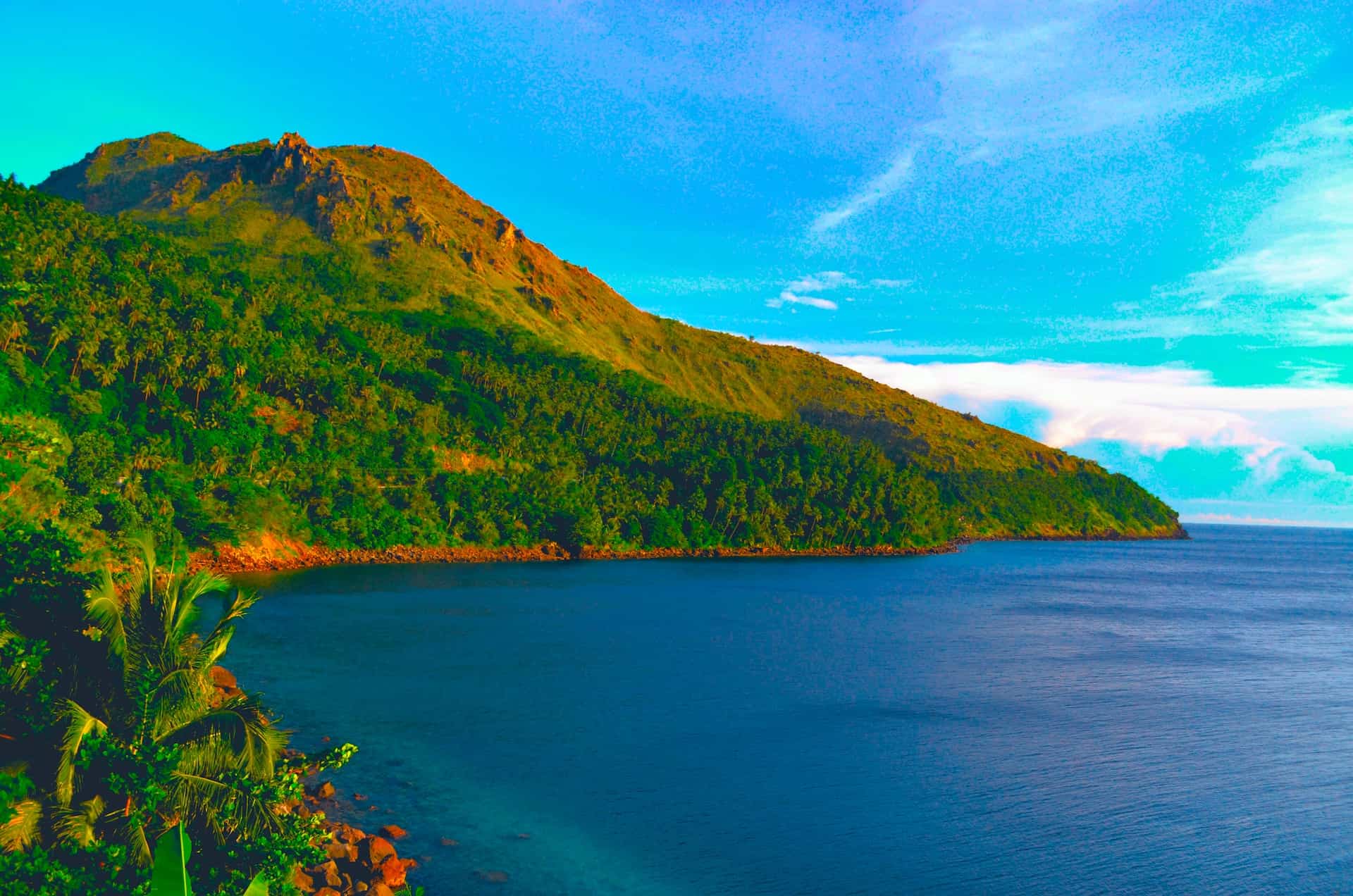
5: Governance and Administration in Negros
The governance and administration of Negros, an island marked by its rich history and cultural diversity, reflect the complexities and challenges of managing a region with distinct geographic and demographic characteristics. This section delves into the political structure, administrative challenges, and future prospects of governance in Negros, largest island comprising the provinces of Negros Occidental and Negros Oriental.
Political Structure and Historical Governance
Negros, as an island, is unique in the Philippines for being divided into two provinces: Negros Occidental and Negros Oriental. This division, which dates back to the Spanish colonial period, has shaped the island's political landscape. The governance of Negros is characterized by a dual structure, with each province having its own set of government officials, including a governor, vice-governor, and provincial board members.
The capital of Negros Occidental is Bacolod City, a highly urbanized city that operates independently of the province. It has its own city mayor and local government unit. Dumaguete City, the capital of Negros Oriental, similarly functions as an independent city with its own local government. These cities are not just administrative centers but also economic and cultural hubs of the island.
Each province in Negros is further divided into cities and municipalities, each governed by a mayor and a local council. This decentralized system allows for local governance that is more attuned to the needs and challenges of individual communities. However, it also presents challenges in terms of coordination and resource allocation between different levels of government.
Governance Challenges in Negros
The governance of Negros faces several challenges, primarily due to its geographical division and diverse population. One of the main challenges is ensuring equitable development across the island. While the urban areas, particularly Bacolod and Dumaguete, have seen significant growth and development, some rural areas continue to struggle with issues such as poverty, lack of infrastructure, and limited access to basic services.
Another challenge is the management of natural resources. Negros is rich in natural resources, including fertile agricultural land and diverse ecosystems. However, balancing economic development with environmental sustainability is a constant challenge. Issues such as deforestation, overfishing, and pollution require effective governance and stringent environmental policies.
The sugar industry, a significant part of Negros' economy, also presents governance challenges. The industry is subject to market fluctuations and competition, necessitating government intervention and support. Ensuring the welfare of sugarcane workers and small-scale farmers, and addressing issues related to land ownership and agrarian reform, are critical aspects of governance in Negros.
Political Dynamics and Public Administration
The political dynamics in Negros are influenced by its history and culture. Political families and clans play a significant role in the island's politics, with some families having a long history of political involvement. This dynastic politics, while a common feature in many parts of the Philippines, raises concerns about political diversity and representation.
The administration of public services in Negros is a complex task, given the island's size and population. Providing access to quality education, healthcare, and social services across both urban and rural areas is a priority for local governments. Infrastructure development, including roads, public transportation, and utility services, is also a critical area of focus.
The local governments in Negros have undertaken various initiatives to improve public administration and service delivery. These include investments in education and health facilities, infrastructure projects, and programs aimed at poverty alleviation and rural development. Collaboration between the provincial governments of Negros Occidental and Negros Oriental, though limited, has been seen in areas such as tourism promotion and environmental conservation.
Future Prospects and Governance Innovations
Looking to the future, the governance of Negros faces the task of adapting to changing economic, social, and environmental landscapes. Embracing innovation in governance, including the use of technology and data-driven decision-making, can enhance the efficiency and effectiveness of public services.
There is also a growing recognition of the importance of participatory governance, involving citizens and communities in the decision-making process. This approach can lead to more inclusive and sustainable development outcomes. Empowering local communities, particularly in rural and marginalized areas, is crucial for achieving equitable growth across the island.
The potential for greater collaboration between Negros Occidental and Negros Oriental is another area of opportunity. Joint initiatives in areas such as economic development, infrastructure, and environmental management can bring mutual benefits and contribute to the overall progress of Negros.
Conclusion: Charting a Path for Effective Governance in Negros
In conclusion, the governance and administration of Negros are characterized by a blend of historical legacies, contemporary challenges, and future possibilities. The dual province structure, while presenting unique challenges, also offers opportunities for diverse and localized governance approaches.
Negros, with its rich cultural heritage and economic potential, has the capacity to overcome its governance challenges and become a model of effective regional administration in the Philippines. By focusing on equitable development, environmental sustainability, and participatory governance, Negros can chart a path towards a prosperous and inclusive future.
The journey ahead for Negros in terms of governance is one of balancing tradition with innovation, addressing local needs while pursuing broader regional goals, and fostering a governance culture that is transparent, accountable, and responsive to the people. As Negros continues to evolve, its governance and administration will play a pivotal role in shaping the island's destiny, ensuring that it remains a vibrant and thriving part of the Philippine archipelago.
6: Environmental Stewardship and Conservation in Negros
Negros island, a gem in the archipelago of the Philippines, is not only a land of cultural richness and historical depth but also an island endowed with abundant natural resources. Its diverse ecosystems, ranging from lush rainforests and rugged mountains to fertile plains and vibrant coral reefs, are a testament to the island's environmental wealth. However, with the ever-increasing demands of development and population growth, Negros island faces the critical challenge of preserving its natural heritage while pursuing economic progress.
The Environmental Riches of Negros
The biodiversity of Negros is one of its most precious assets. The island's central mountain range, serving as a natural divide between Negros Occidental and Negros Oriental, is a haven for a wide array of flora and fauna, some of which are endemic to the island. These mountains and the surrounding forested areas are crucial not only for biodiversity conservation but also for providing ecosystem services like water regulation and climate stabilization.
Negros' coastal areas, both in the east and the west, boast extensive marine ecosystems that include mangroves, sea grass beds, and coral reefs. These ecosystems are vital breeding grounds for marine life and serve as natural barriers protecting the island's coastal communities from storms and erosion.
Challenges to Negros’ Natural Environment
Despite its natural bounty, Negros faces significant environmental challenges. One of the primary concerns is deforestation, largely driven by agricultural expansion, illegal logging, and urbanization. The loss of forest cover not only threatens biodiversity but also impacts water resources and increases vulnerability to natural disasters.
Another major challenge is the degradation of marine environments. Overfishing, destructive fishing practices, and pollution have taken a toll on Negros' coastal ecosystems, affecting both marine life and the communities that depend on these resources for their livelihoods.
Climate change poses an additional and overarching threat, exacerbating existing environmental issues and introducing new challenges. As an island, Negros is particularly vulnerable to the impacts of climate change, including rising sea levels, increased frequency of extreme weather events, and changes in rainfall patterns.
Conservation Efforts and Sustainable Practices
Recognizing these challenges, various initiatives and programs have been implemented in Negros to promote environmental conservation and sustainable practices. Government agencies, non-governmental organizations, local communities, and private sectors have been collaborating to protect and restore the island's natural environments.
In Negros Occidental, initiatives like community-based forest management and reforestation projects aim to restore degraded forest areas and promote sustainable livelihoods among local communities. The province has also established protected areas and sanctuaries to conserve the region and its unique biodiversity.
In Negros Oriental, efforts are focused on marine conservation, including the establishment of marine protected areas and the promotion of sustainable fishing practices. Educational campaigns and community involvement are crucial components of these conservation efforts, ensuring that local communities are active participants in preserving their natural heritage.
Sustainable tourism is another area where Negros is making strides. By promoting eco-tourism and responsible travel practices, the island is finding ways to showcase its natural beauty while minimizing environmental impacts. This approach not only helps in conserving natural resources but also provides economic benefits to local communities.
Future Directions and the Road Ahead
Looking forward, the path to environmental sustainability for Negros requires a balanced and integrated approach. This involves strengthening policy frameworks and enforcement mechanisms, enhancing community engagement and education, and promoting sustainable economic practices that do not compromise the environment.
Climate change adaptation and mitigation must be at the forefront of Negros’ environmental strategy. This includes investing in research and development to understand the impacts of climate change on the island and implementing measures to reduce vulnerability and enhance resilience.
The collaboration between various stakeholders – government, local communities, private sector, and civil society – is crucial for the success of environmental initiatives. By working together, the people of Negros can ensure that the island's natural wealth is preserved for future generations, maintaining its status as one of the Philippines' most treasured islands.
Conclusion: Embracing Environmental Stewardship
In conclusion, Negros, with its rich environmental endowments and diverse ecosystems, stands at a critical juncture. The island's future sustainability depends on how effectively it can balance development needs with environmental conservation. By embracing the principles of environmental stewardship and sustainable development, Negros can safeguard its natural heritage while continuing on its path of economic and social progress. The journey ahead is challenging, but with the collective effort and commitment of its people, Negros can emerge as a model of sustainable development, harmonizing the needs of the present with the responsibilities towards the future.
The journey of Negros towards environmental sustainability is not just a local concern but a narrative that resonates globally, reflecting the universal challenge of balancing human development with ecological preservation. This section further delves into the specific environmental initiatives, community involvement, and the broader vision for a sustainable Negros.
Innovative Environmental Initiatives in Negros
Negros has been pioneering in implementing innovative environmental initiatives. For instance, Negros Occidental has been at the forefront of promoting organic agriculture, recognizing the need to reduce reliance on chemical fertilizers and pesticides that harm the environment. The province has developed programs to train farmers in organic farming techniques, aiming to transform Negros into a hub for organic produce.
In the realm of renewable energy, Negros is making significant strides. The island's geographical setting makes it ideal for harnessing solar and wind energy. Investments in renewable energy projects have been increasing, with the aim of reducing dependence on fossil fuels and minimizing carbon emissions. These projects not only contribute to environmental sustainability but also create job opportunities for locals.
Community Engagement and Education
The success of environmental conservation in Negros heavily relies on community involvement. Educational programs and awareness campaigns have been vital in engaging local communities, located especially in rural areas, about the importance of environmental conservation. Schools in Negros incorporate environmental education into their curriculum, instilling a sense of responsibility and stewardship in the region and younger generation.
Community-based projects, such as coastal clean-ups, tree planting drives, and wildlife conservation efforts, have seen active participation from locals. These projects empower communities by giving them a stake in the health and well-being of their environment.
Balancing Conservation with Development
One of the critical challenges for Negros is balancing conservation efforts with economic development. The island's economy, heavily reliant on agriculture and tourism, must evolve in ways that do not compromise its ecological integrity. This requires innovative approaches to development, such as sustainable land use planning, eco-friendly tourism practices, and investment in green technologies.
The government agency, in collaboration with private sectors and environmental groups, is working to develop policies and frameworks that support sustainable development. These include regulations to protect critical habitats, guidelines for sustainable tourism, and incentives for businesses that adopt eco-friendly practices.
A Vision for a Sustainable Negros
The vision for a sustainable Negros is one where economic growth and environmental health go hand in hand. It is a vision where the natural beauty and resources of Negros are preserved and celebrated, not just for their intrinsic value but also for their contribution to the well-being and livelihoods of its people.
To achieve this vision, continuous effort and commitment from all sectors of society are required. It involves a collective shift in mindset, from short-term gains to long-term sustainability, and a willingness to embrace new ways of living and working that respect and preserve the natural world.
Conclusion: A Commitment to a Green Future
In conclusion, the path towards environmental sustainability for Negros is both challenging and rewarding. The island's rich natural resources are its greatest asset, and preserving them is essential for the well-being of current and future generations. Through innovative initiatives, community involvement, and a balanced approach to development, Negros can achieve its goal of becoming a model of sustainable development.
Negros stands as a testament to the possibility of harmonizing human aspirations with environmental stewardship. As the island continues to navigate the challenges of development and conservation, its commitment to a green and sustainable future remains unwavering. The journey of Negros is an inspiring example for other regions striving to achieve a balance between development and sustainability, highlighting the essential role of environmental stewardship in securing a prosperous and sustainable future.
7: Negros in the Context of National Development and Regional Integration
Negros, an island teeming with cultural richness and natural bounty, is not merely an isolated paradise in the Philippines. Its role in national development and regional integration is crucial, showcasing how a single island's progress can be integral to the growth and prosperity of an entire nation. This section delves into Negros' contribution to the Philippine economy, its integration with national initiatives, and the ongoing efforts for regional cooperation and development.
Negros’ Contribution to the Philippine Economy
Negros, split into the provinces of Negros Occidental and Negros Oriental, plays a significant role in the Philippine economy. Historically known as the 'Sugarbowl of the Philippines', the island's sugar industry has been a major contributor to the national economy. The vast sugarcane plantations, especially in western Negros Occidental, not only provide livelihoods for thousands but also contribute substantially to the nation's sugar production, making the Philippines a notable player in the global sugar market.
However, the economic contributions of Negros extend beyond sugar. Agriculture, in general, remains a cornerstone of the island's economy, with Negros Oriental and Negros Occidental producing a variety of crops, including rice, corn, and coconuts. These agricultural products support the food security of the nation and contribute to the livelihoods of rural communities.
In recent years, Negros has diversified its economic base. The growth of sectors such as tourism, technology, and renewable energy has added new dimensions to its economic contributions. Eco-tourism, in particular, leverages the island's natural beauty and cultural heritage, attracting both domestic and international tourists. This not only boosts the local economy but also positions the Philippines as a diverse and attractive tourist destination in Southeast Asia.
Regional Integration and Cooperation
Negros' strategic location situated in south the central Philippines positions it as a crucial link in regional integration and connectivity. The island serves as a gateway between the major regions of Luzon and Mindanao, facilitating trade and movement of people. This has implications for broader regional development initiatives, including infrastructure projects and economic partnerships.
Efforts to enhance connectivity and infrastructure, such as port development and road networks, not only benefit Negros but also contribute to the economic growth of neighboring islands and regions. These initiatives are part of the larger goal of creating an integrated and cohesive economic zone in the Visayas, boosting inter-island trade and cooperation.
Regional cooperation in Negros is also evident in environmental conservation and disaster management efforts. Given its vulnerability to natural disasters, the island has been an active participant in regional initiatives for climate change adaptation and environmental protection. This collaborative approach is crucial for addressing issues that transcend provincial and regional boundaries.
Challenges and Opportunities in National and Regional Context
As Negros navigates its role in national development and regional integration, it faces several challenges and opportunities. Balancing economic growth with environmental sustainability is a key challenge. The island must find ways to capitalize on its natural and cultural assets while preserving them for future generations.
The ongoing efforts to diversify the economy present opportunities for sustainable development. Investing in emerging sectors like renewable energy, information technology, and sustainable tourism can reduce the reliance on traditional industries and pave the way for a more resilient economic future.
Another opportunity lies in strengthening the island's human capital. The educational institutions in Negros are well-positioned to develop a skilled workforce that can meet the demands of a changing economy. By aligning education and training programs with emerging industries, Negros can create a competitive advantage and contribute to national growth.
Conclusion: A Vision for a Progressive and Integrated Negros
In conclusion, Negros’ role in the Philippines' national development and regional integration is multi-faceted and dynamic. As an economic powerhouse, a cultural beacon, and a model of regional cooperation, the island exemplifies how local progress can have far-reaching impacts on a national scale.
Looking ahead, the vision for Negros is one of sustainable growth, inclusive development, and active participation in regional and national initiatives. By harnessing its strengths, addressing its challenges, and capitalizing on new opportunities, Negros can continue to be a vital contributor to the Philippines' journey towards prosperity and development.
Negros’ journey is a testament to the potential of regional contributions to national success. As the island continues to evolve and integrate with broader economic and development frameworks, it stands as a beacon of progress, resilience, and hope in the heart of the Philippines.
8: Socio-Economic Development and Cultural Identity in Negros
Negros, an island that beautifully encapsulates the essence of the Philippines, presents a compelling narrative of socio-economic development intertwined with a rich cultural identity. This section explores the multifaceted socio-economic landscape of Negros, its advancements, challenges, and the deep-seated cultural roots that continue to shape its future.
Socio-Economic Advancements in Negros
Negros, comprising the provinces of Negros Occidental and Negros Oriental, has undergone significant socio-economic transformations over the years. The island, historically dominated by the sugar industry, has progressively diversified its economic base. This diversification has been crucial in fostering socio-economic resilience, particularly in facing global market fluctuations that impact the sugar sector.
Agriculture remains a significant part of the island's economy, with both provinces contributing substantially to the Philippines' agricultural output. Beyond sugarcane, Negros is known for its production of rice, corn, and a variety of fruits and vegetables. This agricultural diversity not only strengthens the island's economy but also plays a vital role in ensuring food security.
In recent years, Negros has witnessed a surge in industrial and service sector growth. Industrial parks and business process outsourcing (BPO) centers have sprung up, especially in urban areas like Bacolod City and Dumaguete City. These developments have created job opportunities for locals, contributing to a gradual shift from rural to urban livelihoods and improving overall living standards.
Tourism is another burgeoning sector in Negros. The island's rich cultural heritage, scenic landscapes, and biodiversity hotspots attract both domestic and international tourists. Festivals like Bacolod's MassKara Festival and Dumaguete's Buglasan Festival are significant tourist draws, showcasing the vibrant culture and traditions of Negros.
Cultural Identity and Its Role in Development
The cultural identity of Negros is an amalgamation of indigenous, Spanish, and modern Filipino influences. This unique blend is evident in the island's festivals, architecture, cuisine, and everyday life. Negros' cultural richness is not just a source of pride for its inhabitants but also a pivotal aspect of its socio-economic development.
The preservation and promotion of cultural heritage have been integral to Negros' development strategy. Cultural tourism, which highlights the island's history, traditions, and arts, has become an important economic driver. Efforts to preserve traditional crafts, cuisine, and performing arts ensure that the island's cultural legacy is passed down to future generations, while also providing economic benefits to local communities.
Negros' education system plays a critical role in maintaining this cultural identity. Schools and universities on the island incorporate local history and culture into their curriculum, fostering a sense of identity and belonging among the youth. This educational approach not only preserves cultural heritage but also instills values of inclusivity and respect for diversity.
Challenges and Future Outlook
Despite its advancements, Negros faces several socio-economic challenges. Income inequality, rural poverty, and underemployment remain persistent issues, particularly in areas dependent on seasonal agricultural activities. Addressing these challenges requires concerted efforts to create sustainable livelihood opportunities and enhance social welfare programs.
Another challenge is balancing economic development with environmental sustainability. As Negros continues to industrialize and urbanize, ensuring that this growth is ecologically sustainable is imperative. Efforts towards sustainable agriculture, eco-tourism, and renewable energy are critical in this regard.
The future outlook for Negros is one of cautious optimism. The island has the potential to become a model of balanced development, where economic growth coexists with cultural preservation and environmental sustainability. Investing in education, infrastructure, and technology, while maintaining a strong focus on cultural and environmental conservation, will be key to realizing this potential.
Conclusion: A Harmonious Blend of Progress and Tradition
In conclusion, Negros stands as a testament to the possibilities of achieving socio-economic development while preserving a rich cultural identity. The island’s journey reflects the dynamic interplay between progress and tradition, challenges and opportunities, local identity and global connectivity.
As Negros moves forward, its ability to harmonize economic aspirations with cultural and environmental imperatives will determine its trajectory. With its resilient spirit, rich cultural heritage, and untapped potential, Negros is poised to carve out a future that is not only economically prosperous but also culturally vibrant and environmentally sustainable. The story of Negros is indeed a narrative of hope, resilience, and a celebration of the Filipino spirit.
9: Infrastructure Development and Its Impact on Negros' Growth
Negros, a vital cog in the archipelago of the Philippines, has experienced a transformative journey shaped significantly by its infrastructure development. This section delves into the infrastructural advancements of Negros, examining how these developments have impacted the socio-economic landscape of the island and its integration with the broader national framework.
The Evolution of Infrastructure in Negros
The infrastructural evolution in Negros has been pivotal in its overall growth. Historically, the infrastructure on the island was primarily focused on supporting the sugar industry, with roads and ports constructed to facilitate the transport of sugarcane and sugar. However, as the island's economy diversified, so too did its infrastructure needs.
In recent years, Negros has seen substantial improvements in its transportation network. Major road projects, such as the upgrading of the Bacolod-Silay Airport and the construction of new highways and bridges, have significantly enhanced connectivity within the island and with neighboring regions. These developments have not only eased the movement of people and goods but have also opened up previously isolated areas, spurring economic growth and integration.
The port facilities in both Negros Occidental and Negros Oriental have been expanded and modernized, boosting the island's capacity for both domestic and international trade. Improved port infrastructure has been crucial in supporting the island's growing industries, from agriculture to manufacturing and tourism.
The Impact of Improved Infrastructure on Economic and Social Development
The enhanced infrastructure in Negros has had a profound impact on its economic and social development. Improved transportation networks have led to increased trade and investment, creating new economic opportunities and jobs. For instance, better roads and port facilities have made it easier for farmers to access markets, positively impacting agricultural productivity and income.
Urban areas, particularly Bacolod City and Dumaguete City, have benefited significantly from infrastructural advancements. The expansion of urban infrastructure, including roads, public transportation, and utilities, has facilitated the growth of these cities as economic and cultural centers. This urban development has also led to improvements in quality of life, with better access to services and amenities.
Infrastructure development has also played a role in the tourism industry. Enhanced accessibility to tourist destinations, coupled with improvements in hospitality infrastructure, has made Negros an increasingly attractive destination for both local and international tourists. This growth in tourism has not only bolstered the island's economy but has also fostered cultural exchange and understanding.
Challenges and Future Directions in Infrastructure Development
Despite these advancements, infrastructure development in Negros faces several challenges. Balancing infrastructural growth with environmental sustainability is a primary concern. As the island continues to develop, ensuring that infrastructure projects do not adversely impact the natural environment is crucial.
Another challenge is ensuring equitable development across the island. While urban centers have seen significant infrastructural improvements, rural areas still lag behind. Addressing this disparity is essential for inclusive growth and development across Negros.
Looking to the future, infrastructure development in Negros is poised to focus on sustainable and inclusive growth. Projects that prioritize environmental sustainability, such as green urban development and eco-friendly transportation systems, are expected to gain prominence. Furthermore, enhancing digital infrastructure to support the growth of technology and innovation-driven industries is seen as a key area of development.
Conclusion: Building the Foundations for a Prosperous Negros
In conclusion, infrastructure development has been a cornerstone of Negros' growth story. The advancements in transportation, urban development, and utility services have not only transformed the island's physical landscape but have also catalyzed its socio-economic development.
As Negros looks ahead, the continued focus on sustainable, inclusive, and innovative infrastructure will be crucial in shaping its future. By building on its current achievements and addressing the existing challenges, Negros can continue to strengthen its position as a vital contributor to the Philippines' growth, a beacon of progress and resilience in the heart of the Visayas.
10: Challenges and Future Prospects for Negros
As Negros continues to evolve within the Philippines, it faces a unique set of challenges and opportunities that will shape its future. This section examines these challenges and the prospects for Negros, focusing on its socio-economic dynamics, environmental concerns, and the potential pathways to sustainable development.
Addressing Socio-Economic Disparities in Negros
Negros, despite its economic advancements and rich cultural heritage, grapples with socio-economic disparities. The divide between the urban prosperity of cities like Bacolod and Dumaguete and the rural areas, where agriculture remains the primary livelihood, is significant. These disparities manifest in varying levels of access to education, healthcare, and economic opportunities.
In rural areas, particularly in regions dependent on sugarcane farming, seasonal employment and income instability are prevalent issues. Efforts to diversify the rural economy through initiatives like agro-tourism, small-scale industries, and sustainable farming practices are crucial in providing alternative income sources and improving livelihoods.
Education is another key area where disparities are evident. While Negros boasts several prestigious educational institutions, ensuring that these opportunities reach all sections of the population is essential for equitable development. Investment in educational infrastructure and programs, particularly in rural and underserved areas, is necessary to uplift the overall educational standards of the island.
Environmental Sustainability: A Pressing Concern
Negros' natural environment, a cornerstone of its identity and economy, faces significant threats from deforestation, pollution, and the effects of climate change. The challenge is to balance the island's economic ambitions with the need to preserve its environmental heritage.
Conservation efforts, sustainable land management, and environmental awareness campaigns are critical in addressing these challenges. Initiatives to promote renewable energy, sustainable agriculture, and eco-tourism can serve as models for environmentally responsible development.
Climate change adaptation strategies are also essential for Negros. As an island, it is particularly vulnerable to rising sea levels, extreme weather events, and changing agricultural patterns. Developing and implementing robust climate resilience plans is vital for safeguarding the island's future.
The Road Ahead: Future Prospects for Negros
Looking forward, the future prospects for Negros hinge on its ability to harness its strengths while effectively addressing its challenges. The island's cultural richness, natural resources, and strategic location are assets that, if leveraged wisely, can propel it towards sustainable growth.
Tourism continues to be a promising sector, offering opportunities for economic growth and cultural exchange. By focusing on sustainable and culturally sensitive tourism practices, Negros can attract a global audience while preserving its heritage and environment.
Innovation and technology also play a crucial role in shaping Negros' future. Embracing digital transformation and innovation can drive economic growth, particularly in sectors like agriculture, education, and small businesses. This approach can also help in addressing social issues like healthcare access and education quality.
Conclusion: A Vision for a Thriving Negros
In conclusion, Negros stands at a crossroads of tradition and modernity, facing challenges but also teeming with opportunities. Its journey forward is about striking a balance – between economic growth and social equity, cultural preservation and innovation, environmental sustainability and development.
Negros' potential lies in its ability to adapt, innovate, and preserve. By embracing a holistic and inclusive approach to development, Negros can not only overcome its challenges but also emerge as a leader in sustainable and culturally vibrant development in the Philippines. The future of Negros, with its rich history and dynamic spirit, holds the promise of a thriving society, grounded in its roots yet reaching towards new horizons.
Sources: https://en.wikipedia.org/wiki/Negros

